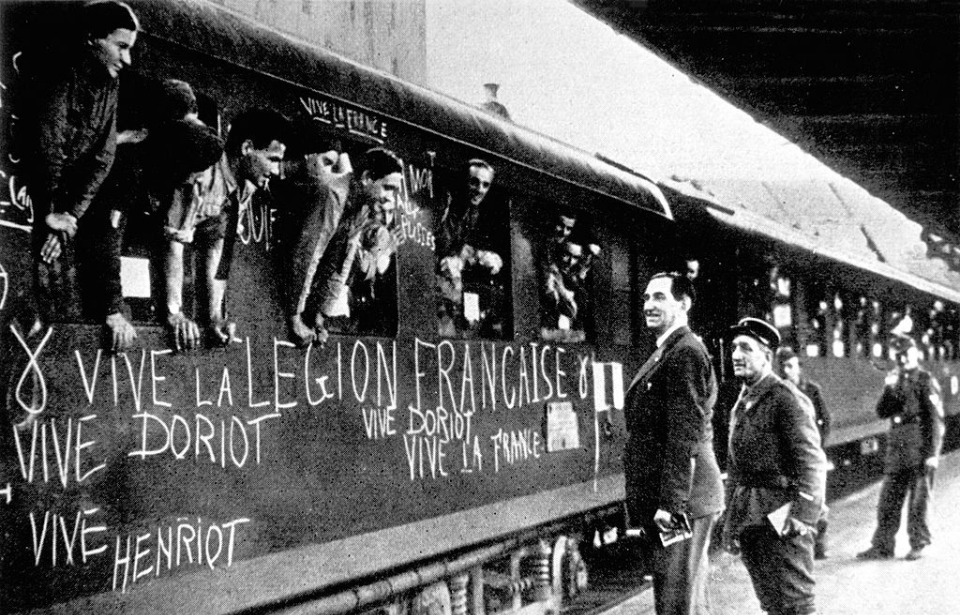Typically, the Schutzstaffel (SS) is viewed as an all-German organization that filled its ranks with those who deeply resonated with the Führer’s message and goals. While the latter may be true, as early as 1940, positions were open to those who weren’t German citizens. In fact, one of the most famous Foreign Legions they created, the SS Charlemagne, was made up of French volunteers so dedicated to the cause they were the last to defend the Führerbunker from the Allied advance on Berlin.
Légion des volontaires français contre le bolchévisme
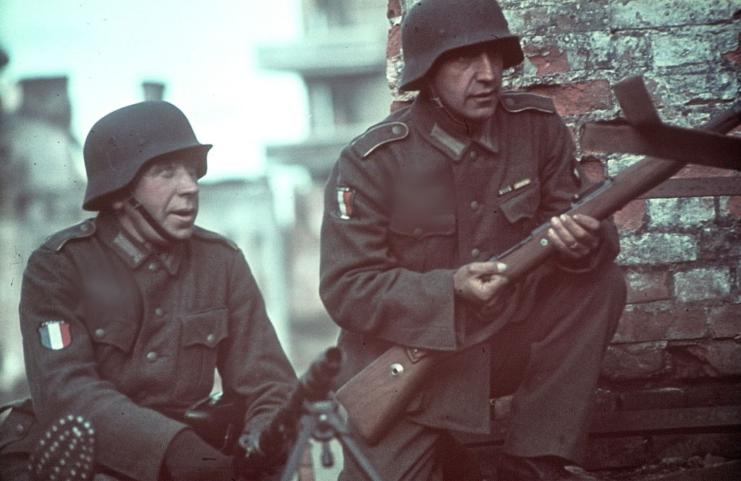
While other nationalities were able to join the SS, most French volunteers began with the Légion des volontaires français contre le bolchevisme (LVF), which served as part of the German Army for the majority of World War II. The group formed in July 1941, the result of various organizations that supported the German government’s ideologies. This was in sharp contrast to those in Vichy France, for example, who maintained their neutrality on such topics.
The LVF had no more than 2,300 soldiers at any one time, and a total membership of 5,800 throughout the war, a relatively small amount compared to similar units. While they participated in many engagements, including the Battle of Moscow, their primary role was to engage in Bandenbekämpfung (“bandit-fighting” warfare) against independent Soviet resistors in German-occupied regions near the Eastern Front.
Formation of the SS Charlemagne
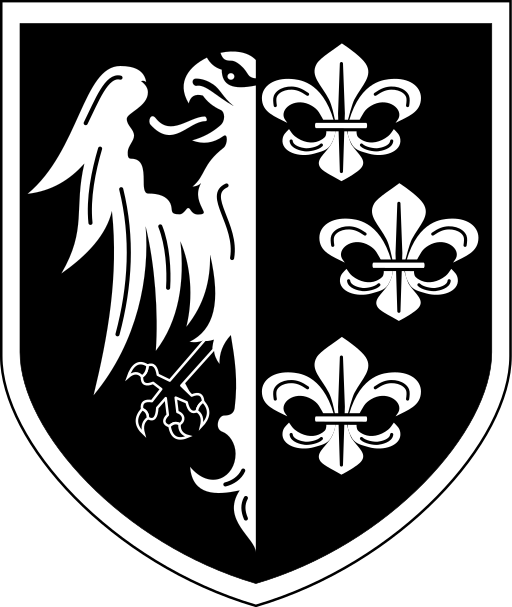
Most of the time, the LVF operated in smaller battalions, rather than a single unit, due to heavy combat losses toward the end of 1941. Following the Allied landings in Normandy in June 1944 and the liberation of France, the LVF was disbanded. Instead, the Frenchmen, along with members of the Französische SS Freiwilligen Sturmbrigade, were reassigned to the Waffen-Grenadier-Brigade der SS “Charlemagne.”
In addition, French collaborators on the run from Allied persecution also joined the new SS division. By the time its ranks were full, SS Charlemagne had a strength of 7,340 men, split into two regiments: the 57th and 58th. German SS-Brigadeführer Gustav Krukenberg was given command, as was Oberführer Edgar Puaud, a Frenchman.
Operational history of the SS Charlemagne
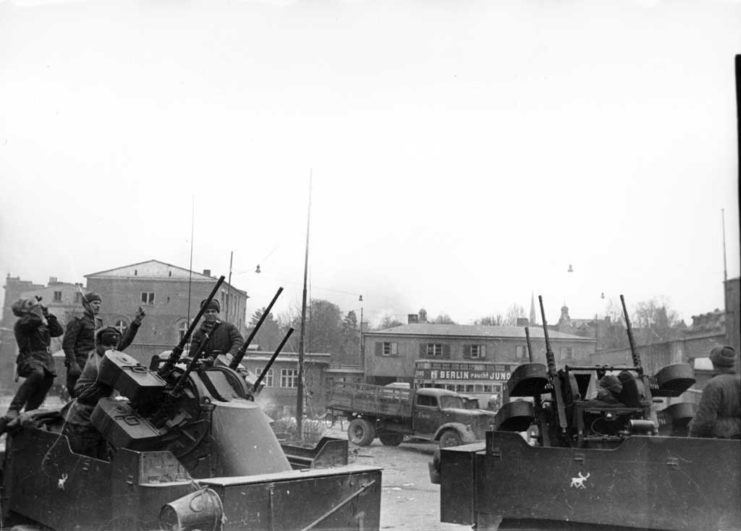
As the Allies slowly advanced through German territory, the SS Charlemagne was tasked with its first battle. The division was to move into Poland, where they would combat the Red Army‘s advance. This didn’t happen, however, as the 1st Belorussian Front launched an attack at Hammerstein.
It is this single engagement that makes up the majority of the SS Charlemagne’s operational history, as the division was pretty much decimated by the Soviets. The men were split into three groups, two of which were led by Puaud and one by Krukenberg. Those commanded by Pauad were either taken out by artillery fire or captured. Only those commanded by Krukenberg made it through and managed to reach the coast for evacuation.
By this point, there were a meagre 700 men left, roughly 10 percent of their original number. Those who remained were organized into a single infantry regiment, made up of two regular battalions and one unarmed heavy support battalion.
Battle of Berlin
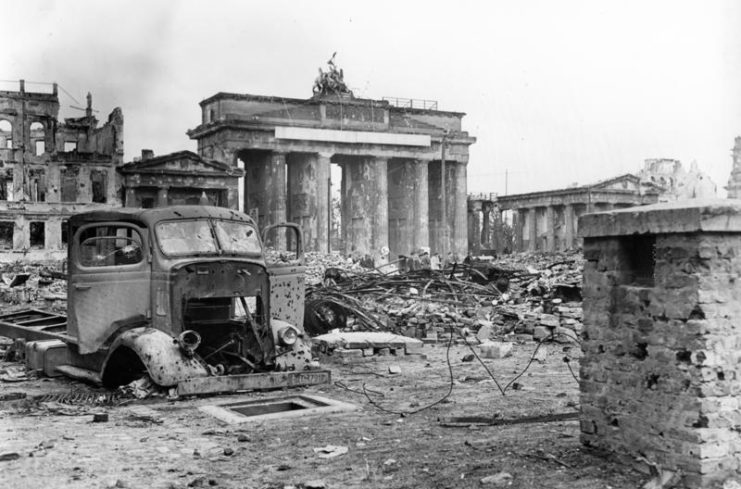
Between 320-350 members traveled back to Berlin to continue fighting against the advancing Red Army. They arrived in the city on April 24, 1945, and a day later were combined with SS-Freiwilligen Panzergrenadier-Division “Nordland” to serve as part of (Berlin) Defence Sector C, with Krukenberg serving as commander. Together, they equaled the size of a battalion.
On April 26, they began their fight against the Soviets, with support from the 11th SS Panzer Battalion and Tiger II tanks, only to lose roughly half their numbers in the process. The combat was intense, as there was heavy tank use by both sides – the Red Army had a captured German Panther tank at their disposal.
Krukenberg presented many of his men with medals while the fighting was still ongoing. The remaining fought until they were eventually pushed toward the center of Berlin – and the Führerbunker.
Defending the Führerbunker
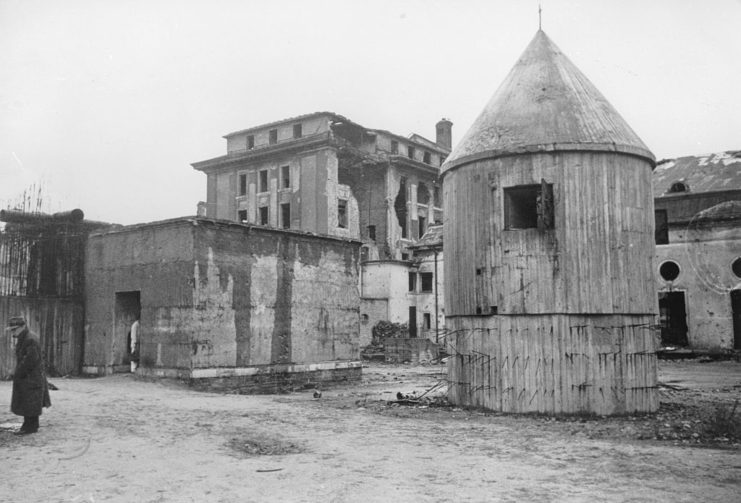
The Führer had hidden himself inside the bunker for the duration of the fighting, despite soldiers still determined to defend the complex. Ultimately, the German leader took his own life on April 30, 1945. Those on the outside, however, had no idea. Mainly made up of the remaining members of the SS Charlemagne, as well as other SS divisions, the defenders continued to protect the bunker until the early hours of May 2.
More from us: Josef Mencik: The Last Knight Who Stood Up to the Germans In WWII
By this time, Krukenberg had given his men orders to split up and get out of Berlin. Many made it as far as the rail station, where they were captured by the Soviets. Krukenberg himself was able to make it further, hiding out in an apartment in Dahlem, before he ultimately surrendered.
As for the others, they were either captured by the Allied forces while trying to flee or were arrested upon their return to France.
